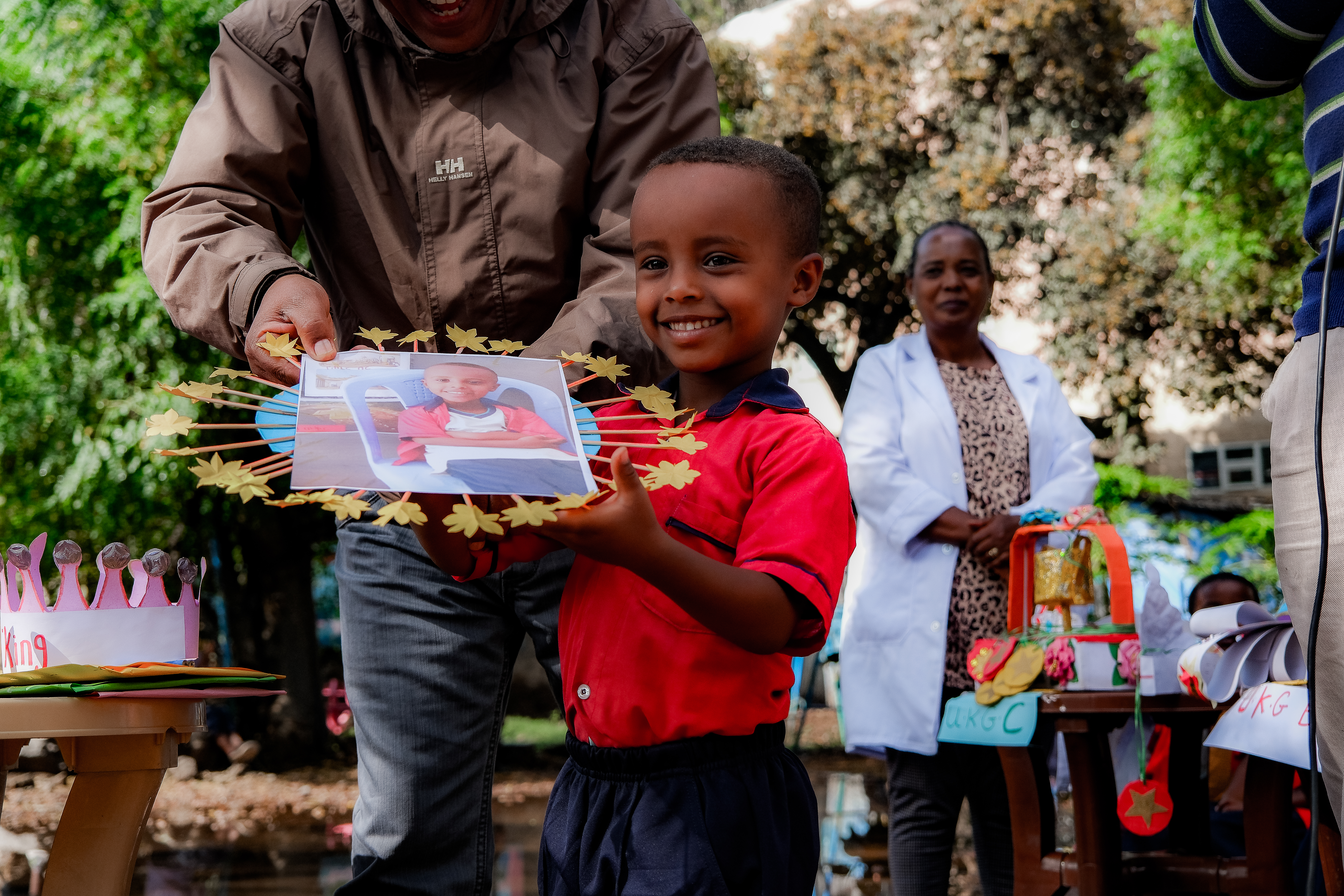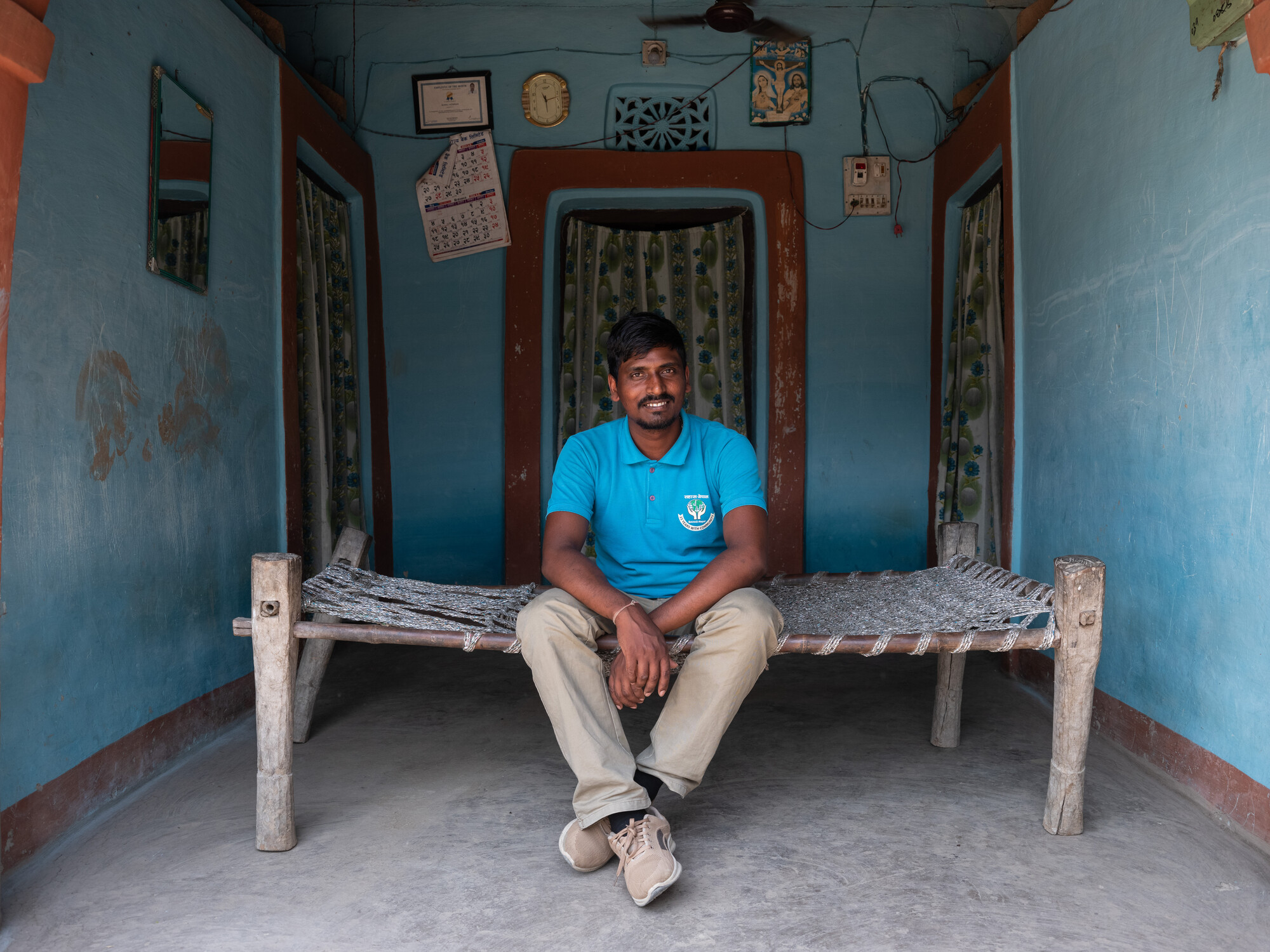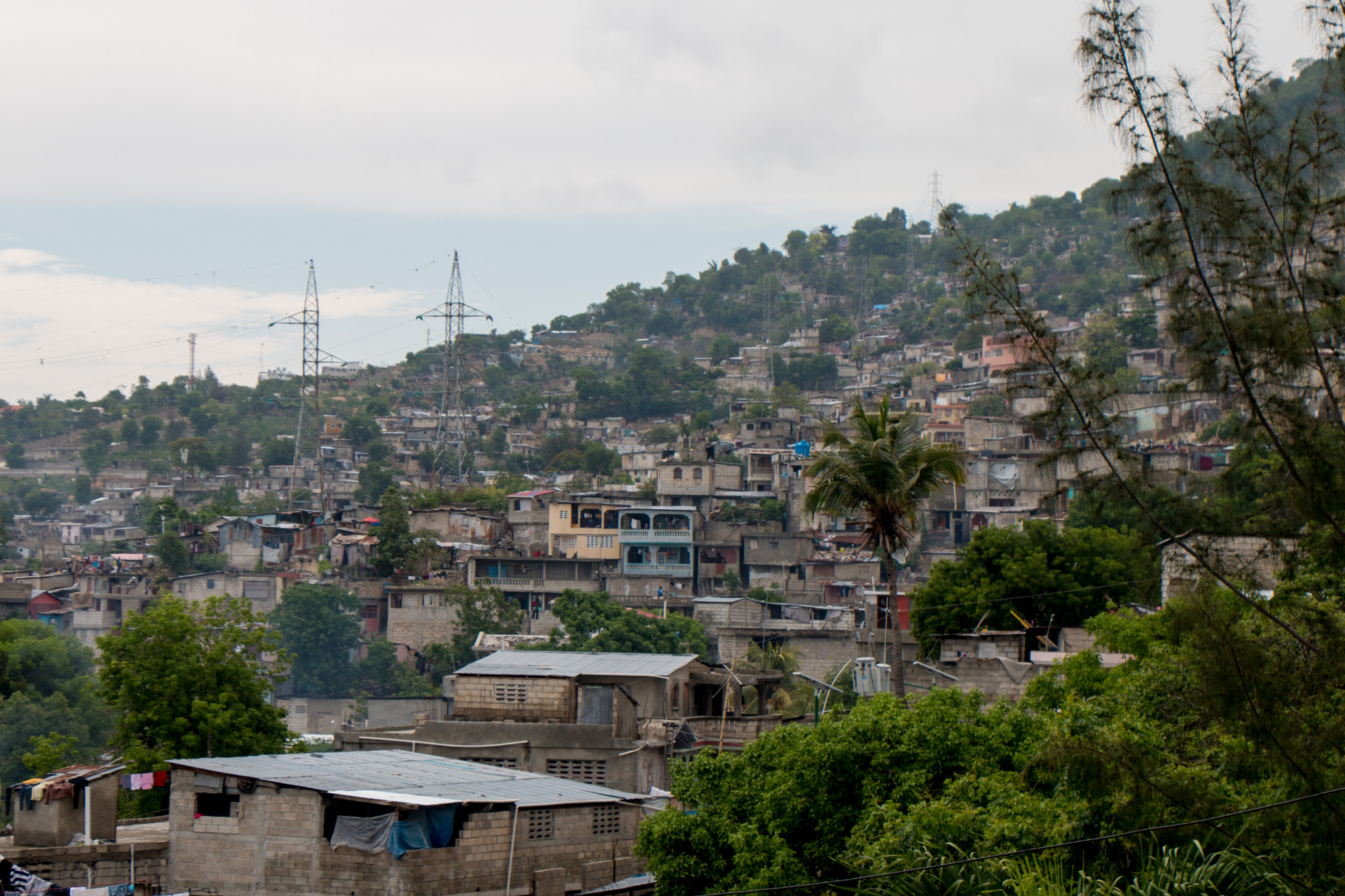Growing confidence
Multilingual preschools prepare Indigenous children for school
As rain starts to fall lightly on the tin roof of a church veranda, 16 preschoolers sit cross-legged along the edges of a rectangular orange floormat. They are focused on a colorful poster in front of the classroom that depicts rainy season in the Bangladeshi countryside.
It is the time of year they are living in, having navigated muddy walkways on their way to Tatihati Multilingual Education Preschool in early October last year.
Teacher Marina Hasda distributes pictures that match elements of the poster to some of the 3- and 4-year-olds. One gets a dark cloud, another gets raindrops. The children are eager to hold pictures of people planting rice, ducks swimming in the water, people in boats and women carrying umbrellas.
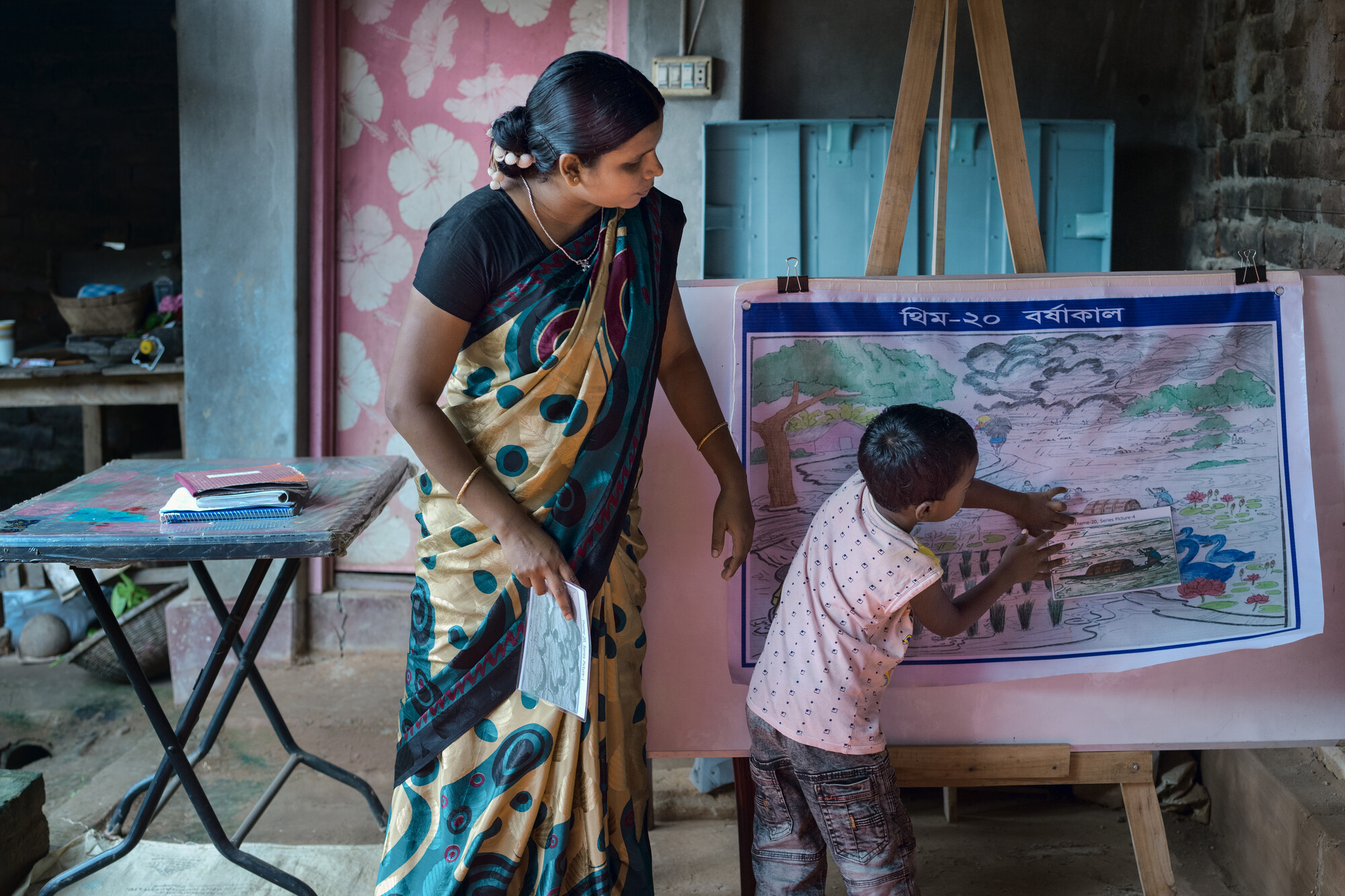
When Hasda invites the children to come forward and match their picture on the poster, they describe their pictures and answer the teacher’s questions. They speak in Santali, the Indigenous language of the Santal ethnic group, who live in and around Tatihati Village and attend Tatihati Multilingual Education Preschool.
“This is how their confidence grows,” says James Kisku, a program officer who works with Mennonite Central Committee (MCC) Bangladesh. His pride in the children shows in his face and is evident in his voice.
MLE improves drop-out rate
He and Phoebe Chiring Marak, education coordinator for MCC Bangladesh, work with two partner organizations that offer multilingual preschool education (MLE) for 348 children at 17 schools. One is Shalom, the development arm of the Church of Bangladesh. The other is MAASAUS (link opens new window), an Indigenous organization that also teaches MLE to Mahali preschoolers.
The goal is to help the children succeed in school instead of becoming part of the national 60% dropout rate for Indigenous children.
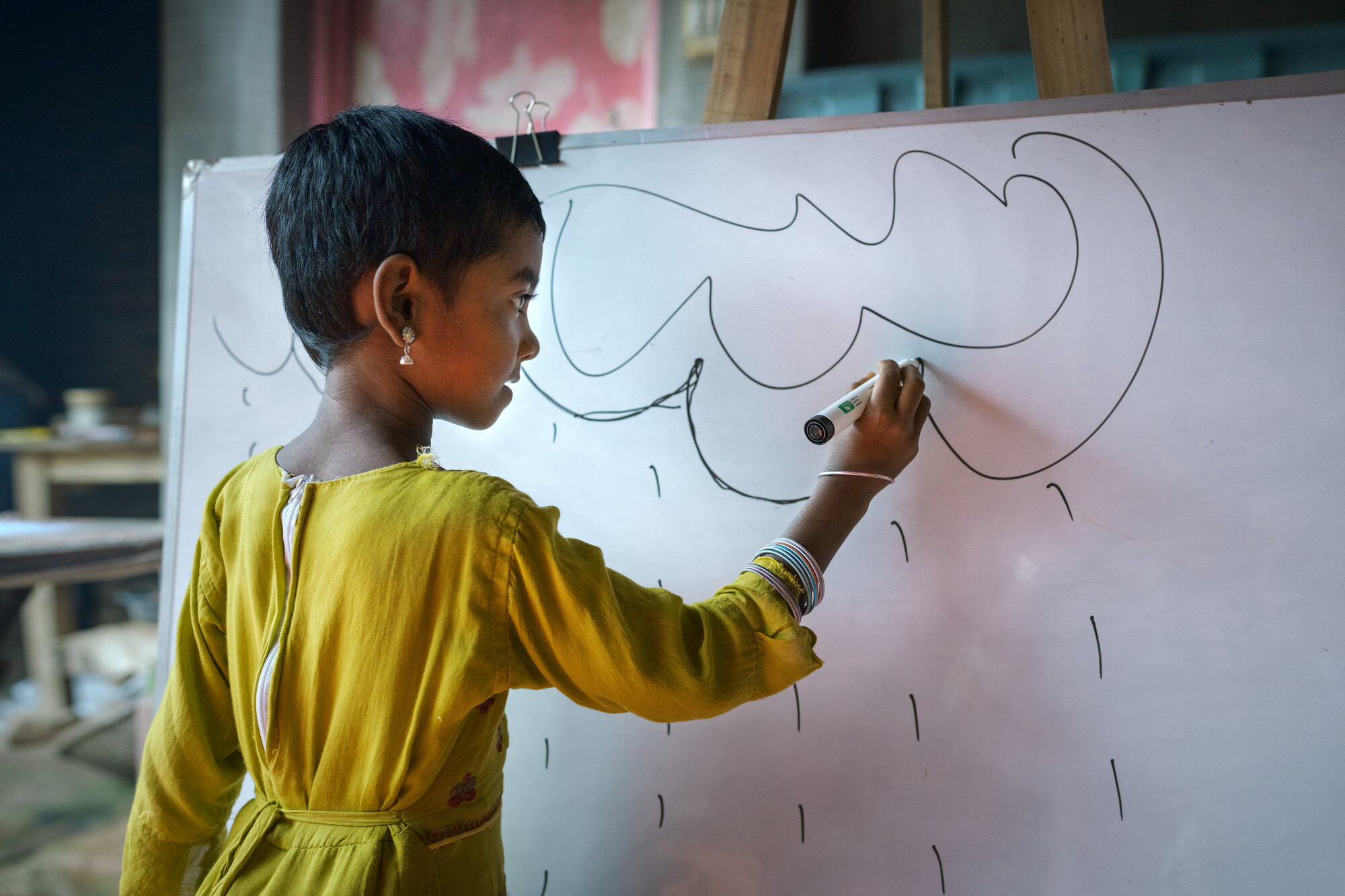
They are most likely to drop out in the early grades because of not knowing Bangla, the language used in public school. Each of the country’s 54 Indigenous groups, which make up less than 2% of the population, has its own primary language and culture.
“The first thing that happens, is they are afraid of school,” says Hasda, “because they don’t understand what is going on. They sit in the corner because they don’t understand.” She has seen children go for one or two days and then stop going.
“But now we see after graduating from here (MLE preschool), they are going regularly to primary school,” she says.
How MLE works
In the first year of MLE, Hasda uses Santali to help the children get acclimated to school routines and activities. They get experience in speaking loudly and confidently in front of others, a trait valued in public school.
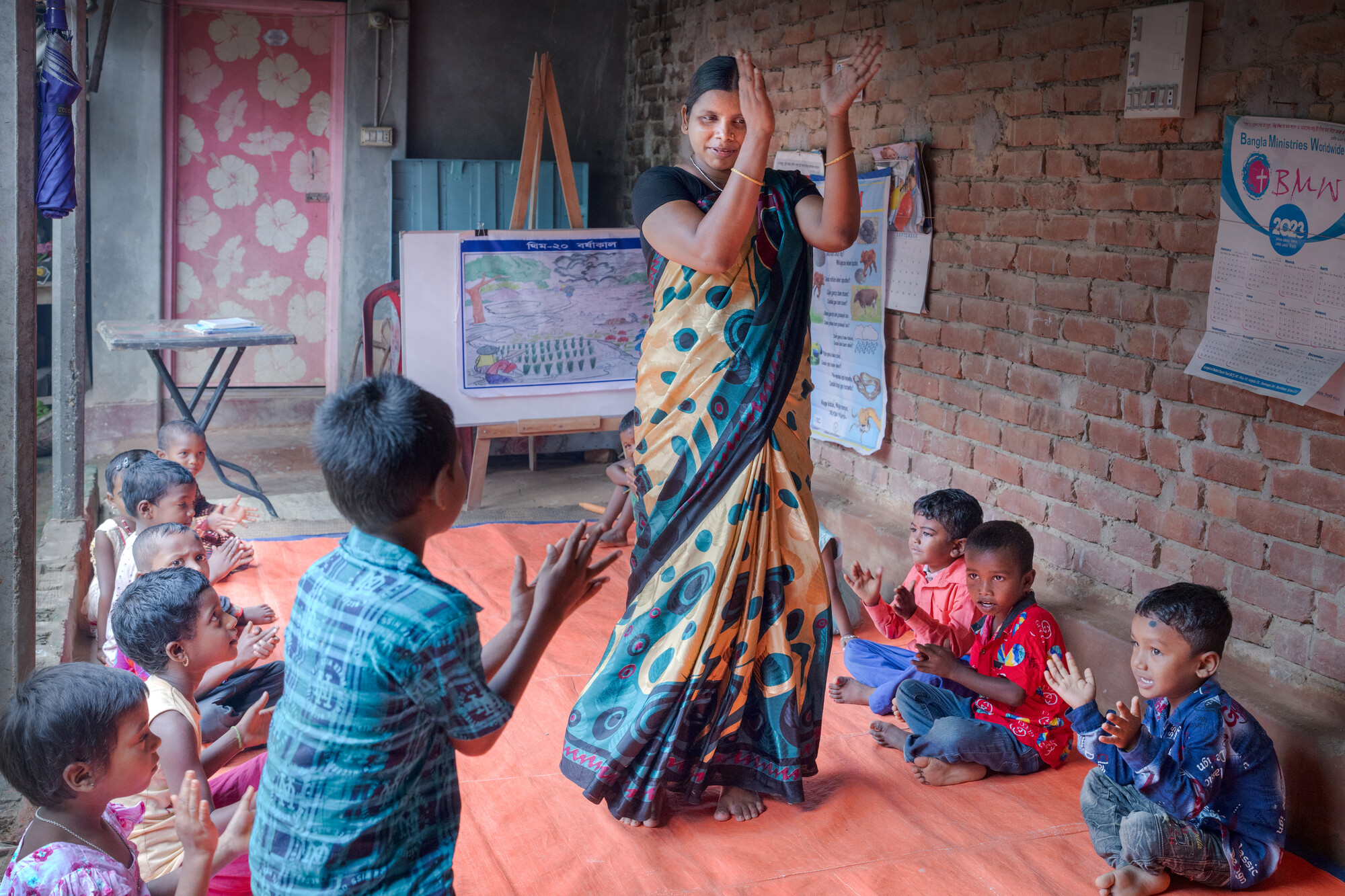
“We are also teaching some Santali words, which gradually we are losing,” says Hasda. “We have rhymes and songs. We have some studies on culture, which we’re losing. So, we are also teaching the children in this so that in the future, they can preserve their own language and culture.”
Teachers in Santal communities use the MLE curriculum, daily lesson plans and resources that Marak and Kisku designed in collaboration with MLE school supervisors, teachers and Santal leaders. The team focused the curriculum around 30 weekly themes, such as family, wild animals, hygiene and fruit, and developed a variety of supportive resources.

The curriculum team wrote or translated 30 stories into Santali, one for each theme. Each story was illustrated and enlarged into a display book so the teacher can read it to a group. In addition, each theme has a large poster with matching pictures, rhymes, songs, games and small group activities in language, math and science.
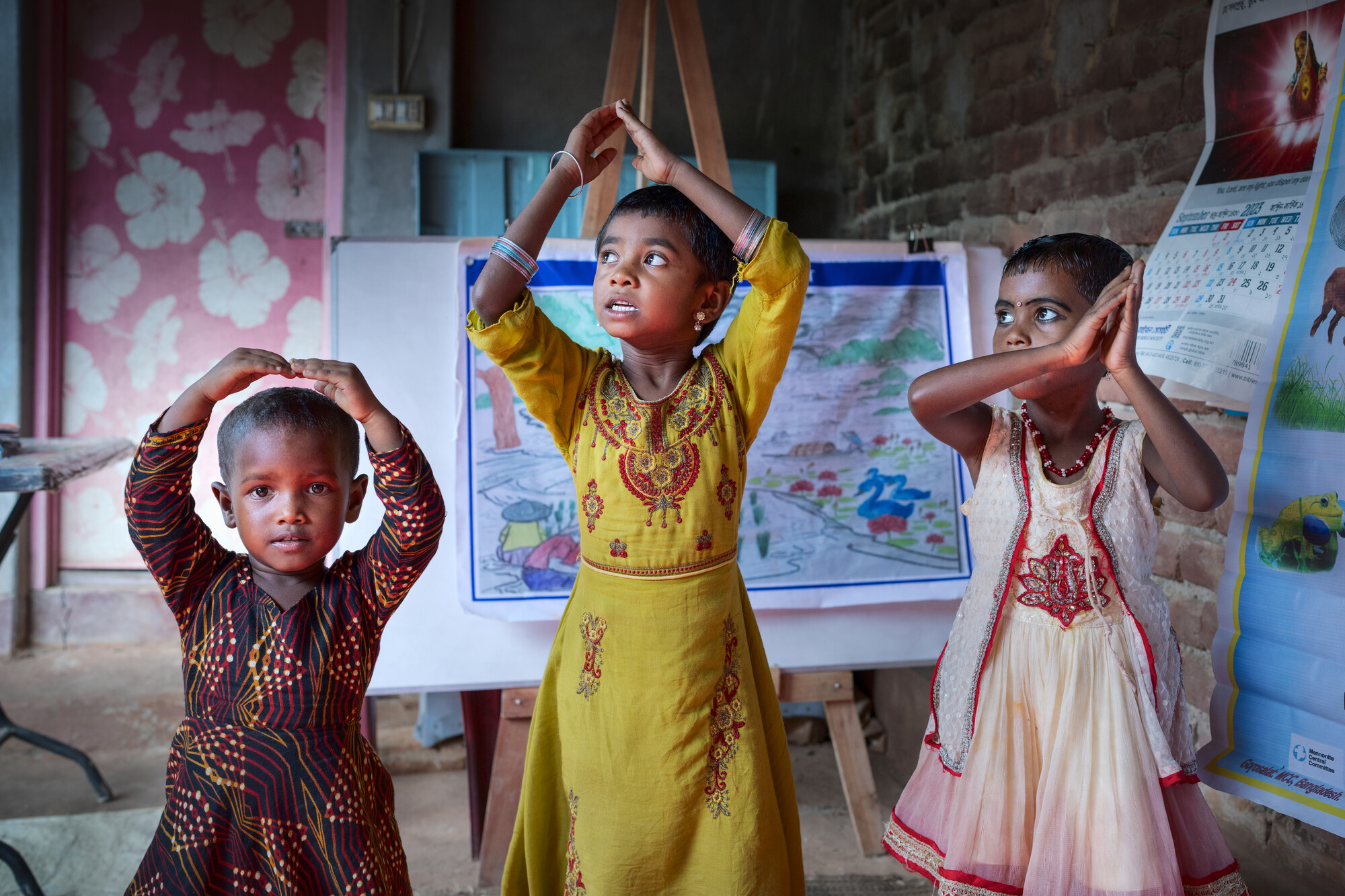
In the second year, Hasda teaches Bangla vocabulary and the Bangla alphabet. By the end of the year, most students know how to write their names in Santali, Bangla and English.
At primary school
At the Tatihati Government Primary School, where MLE children go for first grade, Headmistress Halima Yaesmin is pleased with MLE. “Children who graduated from MLE, they are not hesitant to attend the school. They smile and are confident. They are participating in the classroom. They are building good relationships.”
The first-grade teacher helps the children continue to develop their Bangla. One way she does this is to ask children how to say a particular Bangla word in Santali. “The Indigenous children, they get enjoyment that our teacher is saying their word. Thus, they’re making the connection with the children,” Yaesmin says.
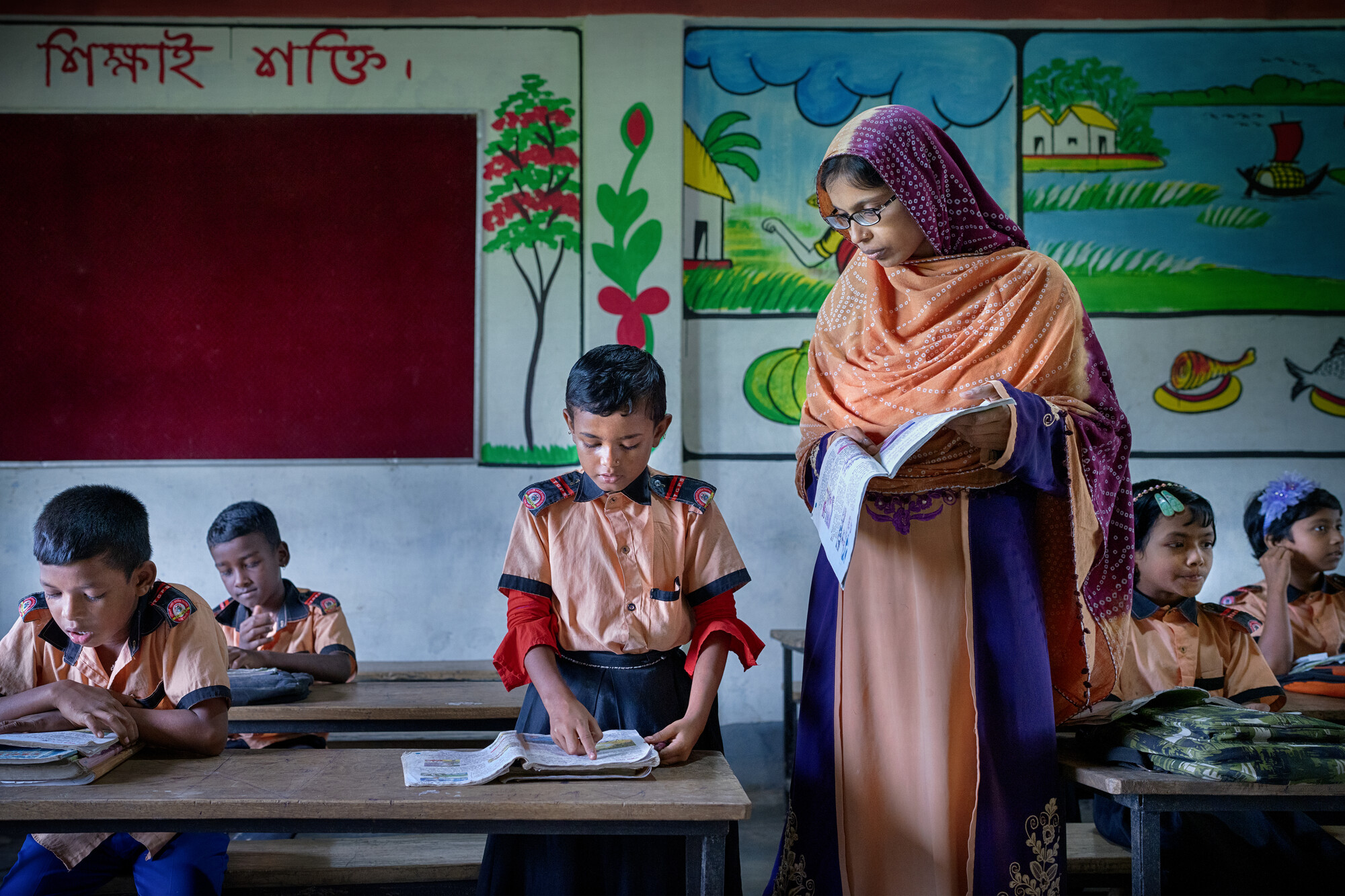
At least 95% of the children who finish MLE complete first grade, says Nelson Hasda, the MLE school supervisor for Shalom, which runs 10 MLE schools.
Kisku says that most children who make it through first grade will stay enrolled through sixth grade. Once parents need to start paying for school and their children are old enough to help the family earn money, they are more likely to drop out.
Family commitment
Santal parents who have for decades been living off the land or doing day labor often struggle to support their families. Education takes second place to food and shelter for many families, Kisku says.
Primary school staff encourage Indigenous parents to prioritize education through trainings and personal visits. MLE doesn’t take any persuasion, Nelson Hasda says, because parents are eager for their children to participate.
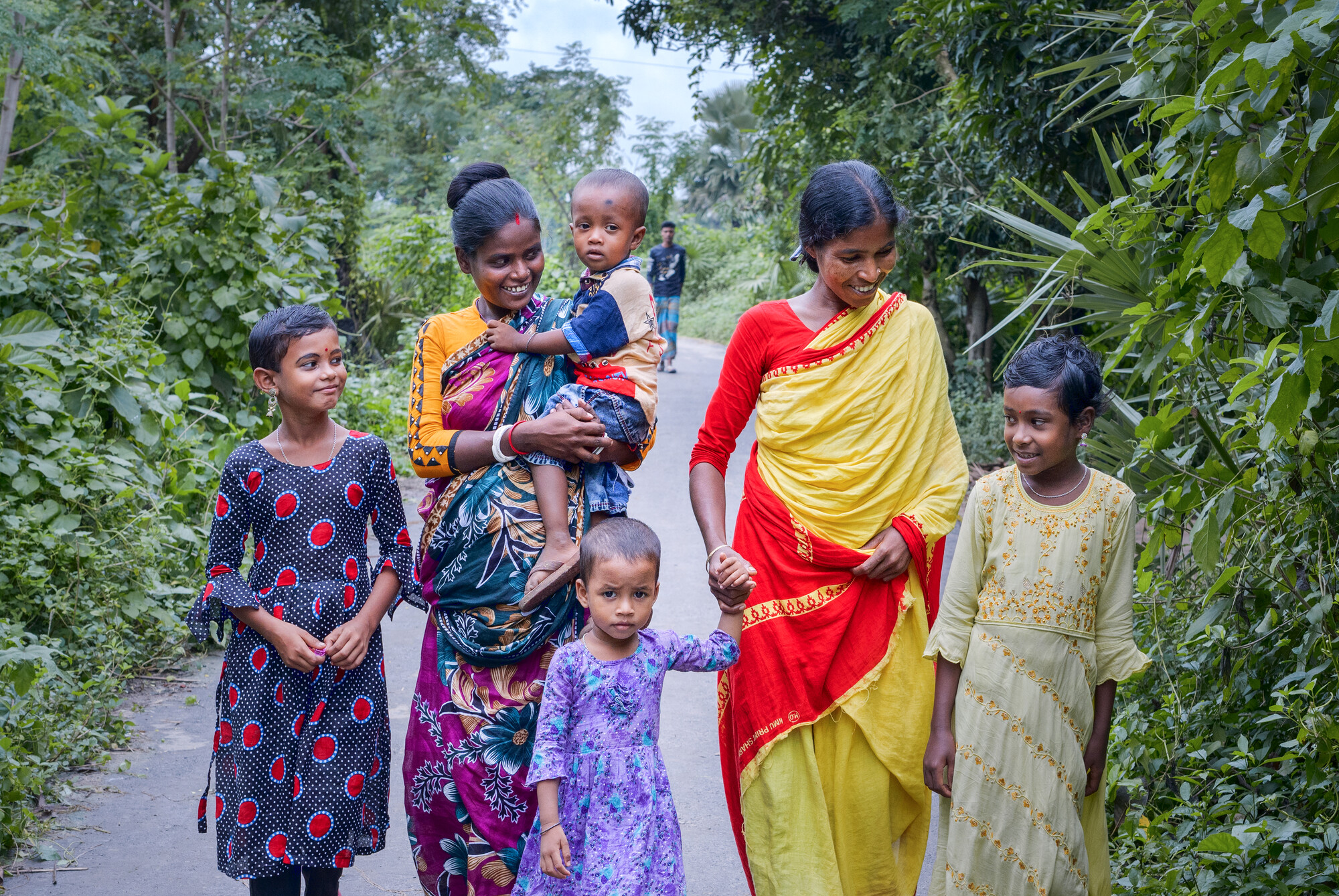
“Most of the people here are involved in agriculture. So they go to work, both husband and wife, early in the morning. Both parents will go to the field, so their children are not secure at home,” he says. If their children are in MLE classes, they know the teacher is taking care of them.
The children also get a hot lunch twice a month, which includes teaching children to wash hands before eating.
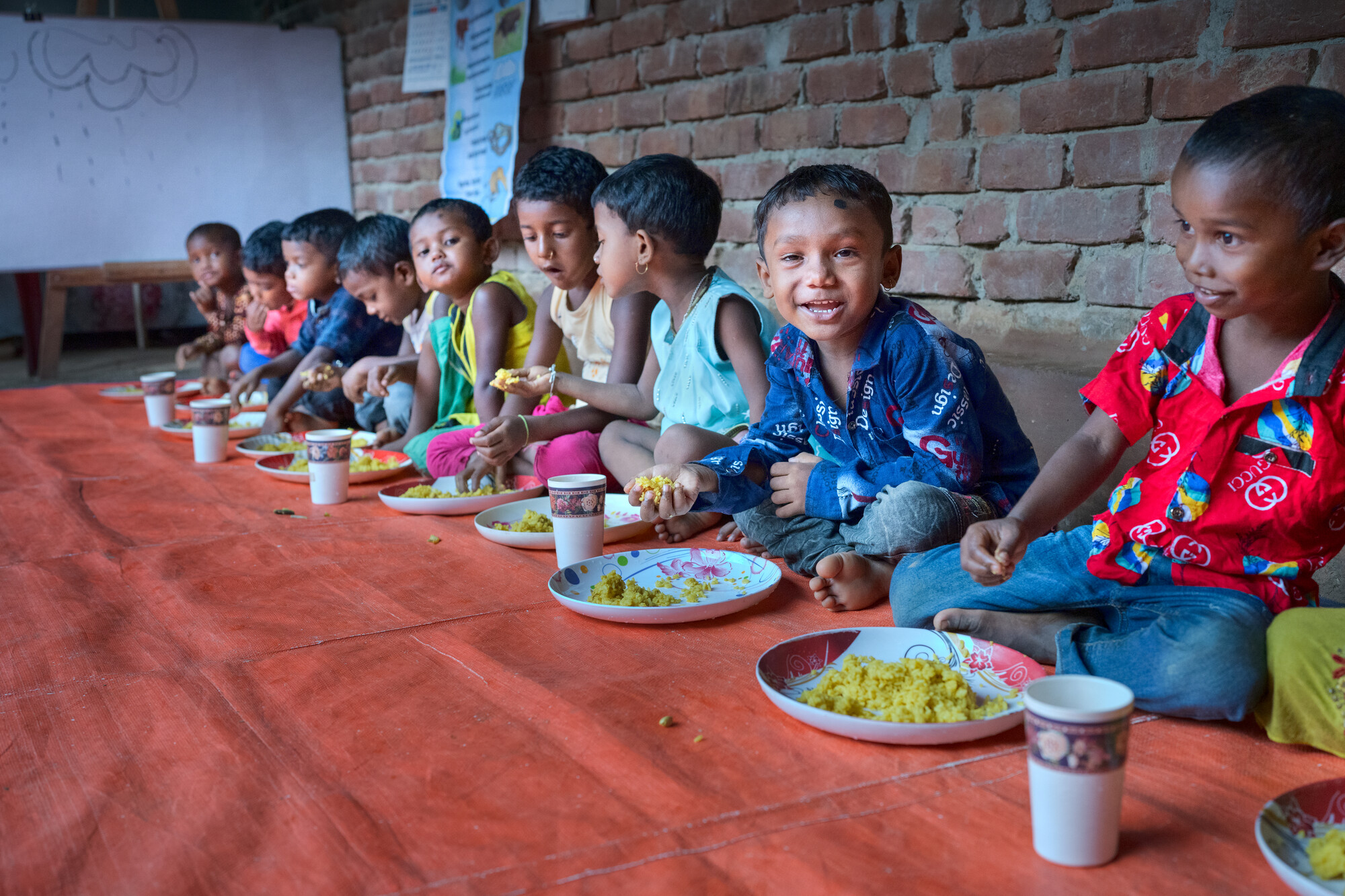
Kisku believes the success of a few will lead to many. As the community sees Juspina and other Santal students getting good jobs after graduating with varied levels of education –10th grade, 12th grade or university – more parents will be inspired to sacrifice for education.
“There’s no way, without education, that you can progress,” Kisku says. “Without education, they will be in the same place with no development. Education is a long-term investment.”
Epilogue: The Santal MLE curriculum, lesson plans and resources are now being used by other organizations in the country to teach Santal preschoolers. The organizations sought out MCC because of its reputation for high quality Santal MLE educational materials. Some organizations are using the materials as a template for other Indigenous groups. In addition, one of the stories that Kisku created in Santali is now being printed as a picture book for Santal families to use in their homes. More are planned.
Education stories
Did you know meals, bike loans and school kits can be the keys that unlock access to education?
Get a glimpse into the local communities we serve as they find innovative ways to provide their children with the education — and future — they deserve.
Give a gift of education
Every gift matters. Give today.


